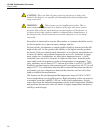
1986, has listed "ceramic fibers (airborne fibers of respirable size)" as a chemical known to the State of California
to cause cancer.
The
Canadian Environmental Protection Agency (CEPA)
has classified RCF as "probably
carcinogenic" (Group 2).
The
Canadian Workplace Hazardous Materials Information System (WHMIS)
– RCF is classified as Class
D2A – Materials Causing Other Toxic Effects
The
Hazardous Materials Identification System (HMIS)
–
(* denotes potential for chronic effects)
FIRST AID PROCEDURES
RESPIRATORY TRACT (nose & throat) IRRITATION:
If respiratory tract irritation develops, move the person to a dust free location. Get medical attention if the irritation
continues. See Section 8 for additional measures to reduce or eliminate exposure.
EYE IRRITATION:
If eyes become irritated, flush immediately with large amounts of lukewarm water for at least 15 minutes. Eyelids
should be held away from the eyeball to ensure thorough rinsing. Do not rub eyes. Get medical attention if
irritation persists.
SKIN IRRITATION:
If skin becomes irritated, remove soiled clothing. Do not rub or scratch exposed skin. Wash area of contact
thoroughly with soap and water. Using a skin cream or lotion after washing may be helpful.
GASTROINTESTINAL IRRITATION:
If gastrointestinal tract irritation develops, move the person to a dust free environment.
NOTES TO PHYSICIANS:
Skin and respiratory effects are the result of temporary, mild mechanical irritation; fiber exposure does not result
in allergic manifestations.
NFPA Unusual Hazards:
None
Flammable Properties:
None
Flash Point:
None
Hazardous Decomposition Products:
None
Unusual Fire and Explosion Hazard:
None
Extinguishing Media:
Use extinguishing media suitable for type of surrounding fire.
Health 1* Flammability 0 Reactivity 0 Personal Protection Index: X (Employer Determined)
4. FIRST AID MEASURES
5. FIRE FIGHTING MEASURES
NFPA Codes:
Flammabilit
y
: 0 Health: 1 Reactivit
y
: 0 S
p
ecial: 0
6. ACCIDENTAL RELEASE MEASURES


















